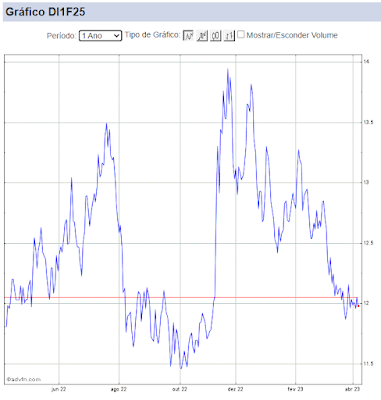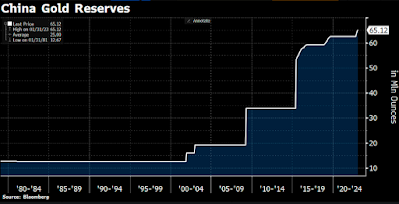China: Otimismo continua.
A segunda-feira está sendo de feriado
em grande parte dos principais centros financeiros mundiais. Na China, contudo, continuamos a observar
uma melhora de humor em relação às perspectivas de crescimento do país,
baseadas na premissa de que novas medidas de suporte ao crescimento serão
colocadas em prática para evitar um “pouso forçado” do país. As bolsas do país
subiram mais de 3% esta madrugada, o que deu suporte adicional ao mercado de
commodities. O PBoC anunciou a expansão de um de seus programas de “relending” o que está sendo visto por
muitos como uma espécie de “QE/LTRO chinês” (detalhes abaixo).
Ao que tudo indica, os ativos de risco
ainda estão no meio de um período cíclico de recuperação, ajudados por um claro
ajuste de posições e preços. Para que este cenário de perpetue, será necessário
que os dados de crescimento, em especial na China, corroborem as expectativas
de estabilização do crescimento da região. Caso isso aconteça, podemos inferir
que os atuais movimentos podem continuar por mais tempo. Caso contrário, poderá
ficar a impressão que o cenário econômico global não se alterou
significativamente, o que pode trazer as tendências que prevaleceram no começo
de ano de volta a tona.
Em relação a China, segundo a Goldman
Sachs:
PBOC
announced on 10th October that it would expand the pilot program on
credit-asset pledged relending (relending refers to the central bank’s lending
to financial institutions) to nine more provinces/cities (previously the pilot
program was only implemented in Shandong and Guangdong). According to the press
release, PBOC branches in these nine provinces and cities will assign internal
credit ratings to corporates borrowing from local financial institutions, and
credit assets that fulfil certain rating requirements will qualify as
re-lending collateral. According to the PBOC, this can help channel more
funding towards the agricultural sector and small to micro-sized enterprises
and support the real economy by lowering financial costs. Some news reports are
treating this as a RRR cut or LTRO/QE equivalent. However, allowing more assets
to be used by certain financial institutions to borrow from the PBOC does not
necessarily mean the central bank will provide meaningfully more
overall relending to financial institutions. Public information on the impacts
of the pilot programs in Shandong and Guangdong are limited but in 2014 the
amount of such relending was only several billion RMB. While expanding these
operations will likely lead to more such relending by local PBOC branches, the
overall amount will be tightly regulated by the PBOC headquarters. The impacts
of this move might be more similar to the targeted RRR cuts for small company
lending and the agricultural sector that we have seen since 2014, which are
small loosening measures aimed more at improving the structure of lending than
meaningfully increasing the overall amount. Amid economic weakness, the move
clearly reveals the loosening bias of monetary policy, but a relatively mild one.
We continue to expect the PBOC to cut the RRR and benchmark rate further before
the end of the year, and other loosening measures are likely to be rolled out
as well to enable the economy to hit the growth target of “around” 7%.
A Merril Lynch resumiu bem a conclusão
das reuniões do FMI em Lima que ocorreram no final de semana:
We held
our Great Debates Conference in Lima, Peru over the weekend. Concerns on China
prevailed although the mood was somewhat constructive with a perception that
the probability of a severe crisis is very low. Russia is in a better situation
than a few months ago after deleveraging. The mood on Brazil was grimmer as the
fiscal adjustment has significant hurdles ahead. There was consensus that for
the rest of EM to resume growth, structural reforms that increase total factor
productivity are needed, particularly for commodity exporters which are exposed
to China. On the monetary side, panelists expect dovish policies. There was
consensus that FX has to be the main adjustment mechanism to lower terms of
trade and tighter global liquidity, and that the vulnerability to FX weakness was
low.


Comentários
Postar um comentário